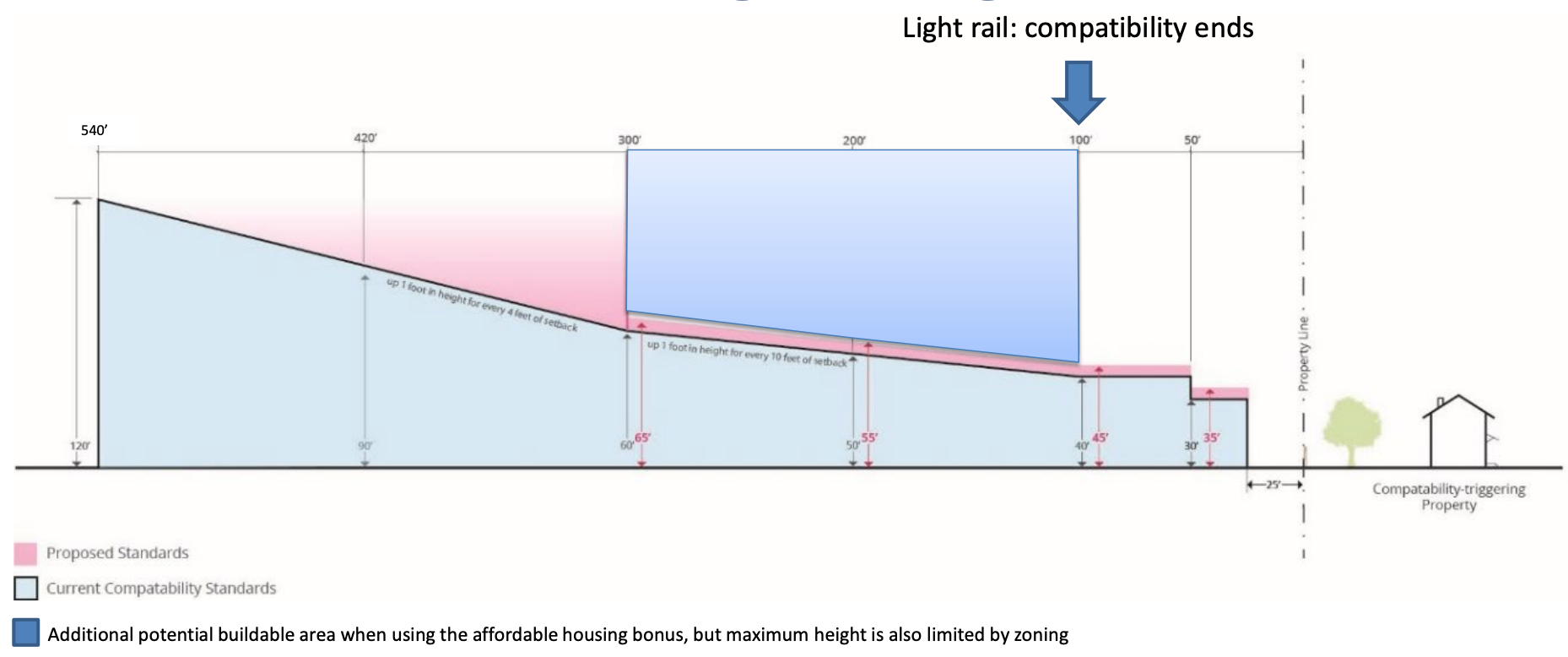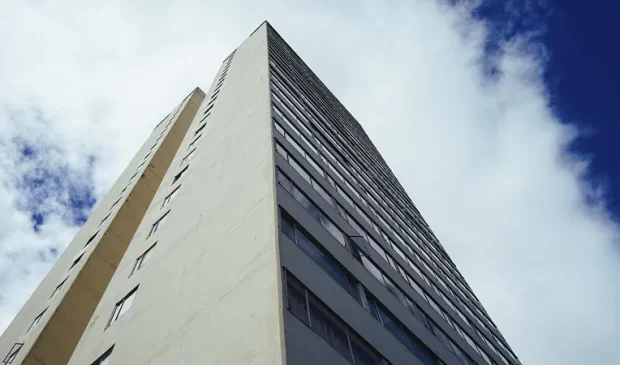Planning Commission says Council’s compatibility reforms don’t go far enough
Tuesday, November 22, 2022 by
Jonathan Lee The Planning Commission last Tuesday recommended broader changes to compatibility standards than what City Council proposed earlier this year, setting the stage for a Council discussion on Dec. 1 over how much to relax the rule.
Compatibility, a rule limiting the height of buildings near single-family homes, has come under increased scrutiny for its role in limiting housing supply. Builders and housing advocates say compatibility renders many sites undevelopable, or developable at a lesser intensity than properties unrestricted by compatibility. Austin’s compatibility rules greatly exceed those in peer cities.
“There’s no single other rule on our books that costs us more housing than compatibility,” said Commissioner Greg Anderson, one of the rule’s most vocal critics.
Council’s proposal would relax compatibility along major streets and transit corridors in hopes of creating more housing in those places. Mayor Steve Adler and Mayor Pro Tem Alison Alter crafted the proposal in May with a goal of getting all Council members on board.
Under the proposal, compatibility would end at 300 feet instead of the current 540 feet for properties along identified corridors. Compatibility would be further relaxed if developers set aside at least 10 percent of units for low-income households. The proposal also reduces parking requirements along the corridors.
City staffers do not recommend approval as written. They argue that the changes would do little to increase housing capacity and would add further complexity to an already convoluted Land Development Code. Staffers instead recommended postponing the item to discuss changes to compatibility in general.
The commission recommended over a dozen changes to what Council proposed, some of which would further reduce the impact of compatibility. Here are some of the more consequential amendments (find the rest here):
- On light rail and large corridors, remove compatibility at 100 feet for projects with affordable housing and 200 feet for projects without affordable housing
- Remove minimum parking requirements for residential projects along light rail corridors
- Include the Red Line MetroRail as a light rail corridor
- Classify the MetroRapid 801 and 803 bus routes as large corridors
- Raise compatibility height limits by 25 feet along medium corridors, if allowed by zoning
- Require affordable housing fees-in-lieu to be spent within a quarter mile of a corridor
- Exempt “missing middle” projects (those with 11 units or fewer) from compatibility; these projects would also not trigger compatibility
- Make compatibility supersede Neighborhood Conservation Combining Districts
-

This diagram by city staffers shows how Council’s proposal to relax compatibility would affect properties along along future light rail lines. (Photo by city of Austin)
The commission voted 7-2 in favor of the amendments, with commissioners Jennifer Mushtaler and Carmen Llanes Pulido against.
Llanes Pulido expressed concern over the lack of notification and community engagement related to the change. “I’m concerned that we’re going to miss something because we didn’t have a close enough look from a community planning perspective,” she said.
Several commissioners said they hoped the commission’s recommendation is only a small step toward more influential changes in the future.
“This is not the end of the work by any means,” Commissioner Awais Azhar said, adding, “We need to go beyond what we’re doing here.”
The Austin Monitor’s work is made possible by donations from the community. Though our reporting covers donors from time to time, we are careful to keep business and editorial efforts separate while maintaining transparency. A complete list of donors is available here, and our code of ethics is explained here.
You're a community leader
And we’re honored you look to us for serious, in-depth news. You know a strong community needs local and dedicated watchdog reporting. We’re here for you and that won’t change. Now will you take the powerful next step and support our nonprofit news organization?




